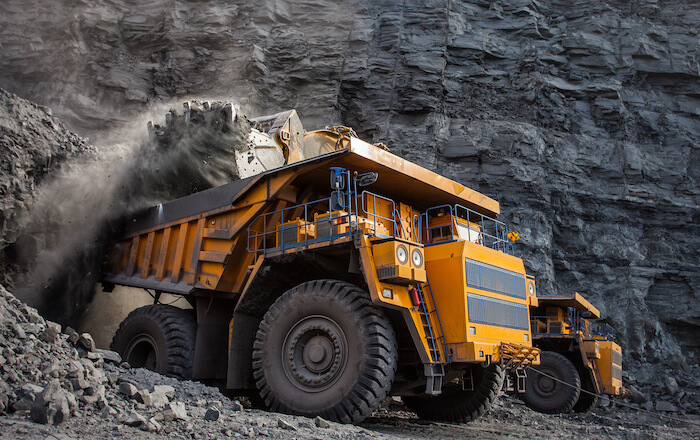In order to access the minerals underground, we have to mine for them. For many years, the priority of finding these materials greatly outweighed any thoughts of negative environmental impact.
However, a growing concern over the effects of mining, particularly how it may pollute water supplies, has caused an industry-wide rethink of dangerous mining practices.
Learn more about the effects of mining on water quality, and what can be done to minimise the impact, here.
The effects of mining on water quality
During the practice of mining, rocks and minerals that were once trapped underground are exposed to the air. This often leads to acid rock drainage (ARD), and acid mine drainage (AMD).
When acid rock drainage occurs, the sulphides in rocks come into contact with air and water, creating sulphuric acid. After rainfall or surface drainage, the sulphuric acid is carried into streams, and onto other water sources. The acid then renders the water undrinkable, and can destroy marine life.
Due to waste rocks and open pits, acid rock drainage occurs on a large scale during mining. This is known as acid mine drainage. As the process keeps happening until all the sulphide is leached, one pit can result in thousands of years of AMD.
Acid mine drainage is just one way that mining can degrade water quality. Chemical leaching can occur from both exposed rocks and chemical run-off during the ore separating process. And even the sediment disturbed and created during mining can lead to water pollution.
What is the mining industry doing to minimise the issue?
The very nature of mining itself means an impact on the environment is unavoidable. What the mining industry can do, however, is try to minimise this impact. Preventing and treating acid mine drainage should be a key concern of the industry.
Treating AMD focuses on removing leached acids from the water, adjusting the pH back to an acceptable level. One method being actively employed is chemical treatment. Chemical treatment involves adding alkali chemicals to a contaminated water supply. Common chemicals used include limestone and soda ash, but organic decomposing materials such as newspaper have also been effective.
Physical treatment is another potential treatment. Artificial waterfalls are used to disturb affected water and add oxygen, which then creates an iron hydroxide sludge. The sludge is heavy, so can be removed from the water and treated.
Cost-effective methods of prevention, rather than treatment, are also being trialled. Covering the exposed rocks in waste piles has proved to be an effective but expensive control method.
Mining and water monitoring
Monitoring water quality near a mine is crucial. Correct and consistent water monitoring can help find an issue, and ensure pollution is dealt with immediately. As treatment often involves using other chemicals to establish a balance, thorough monitoring must be employed.
Mining has a huge effect on the environment, and correcting past mistakes often feels like a game of catch-up. However, the impact of mining on water quality can be minimised – as long as the correct measures are employed, and action is taken.
Here at Aquaread, we have the tools you need to reliably monitor water quality in the mining industry — take a look at our Mining Applications page to see some of our suitable monitoring equipment.

